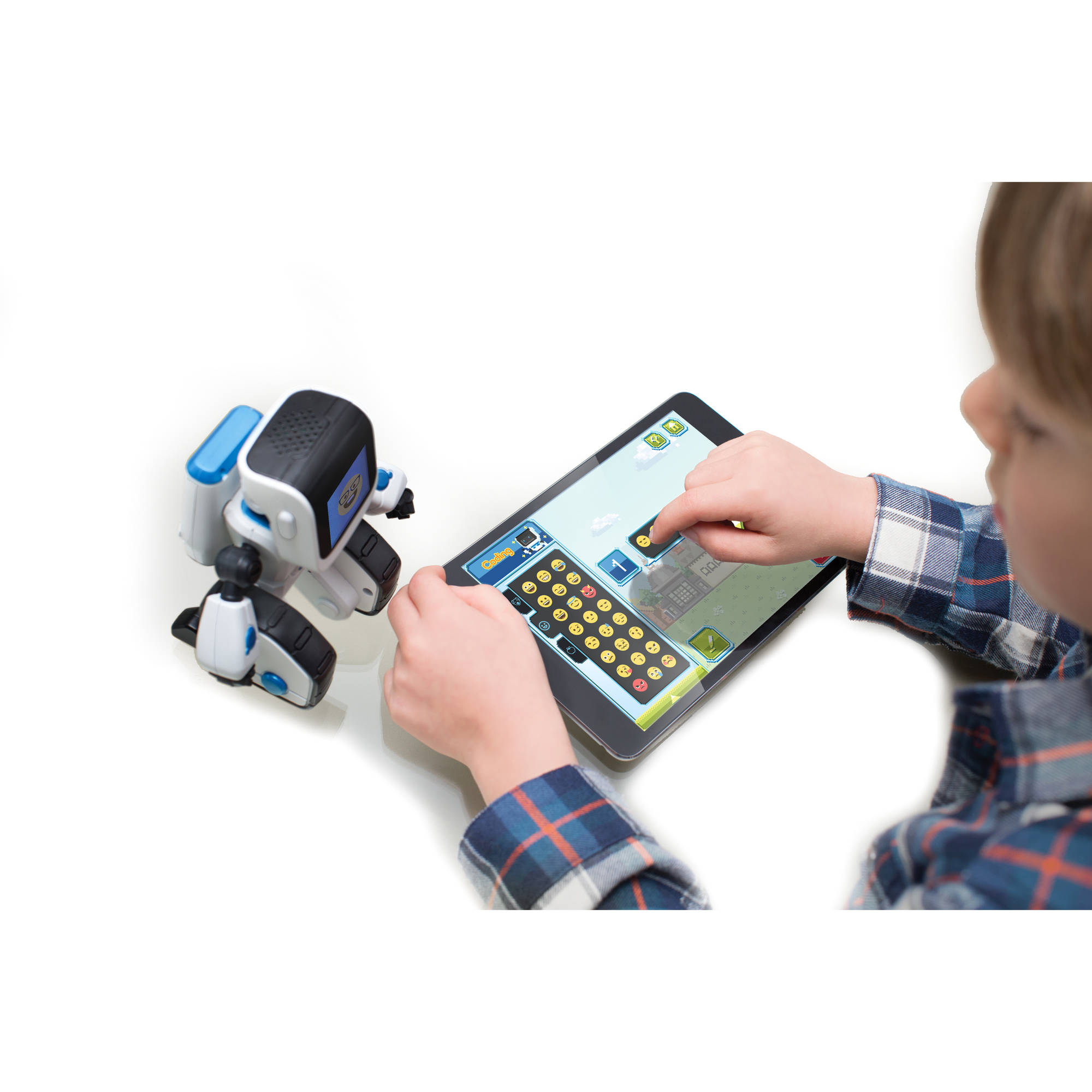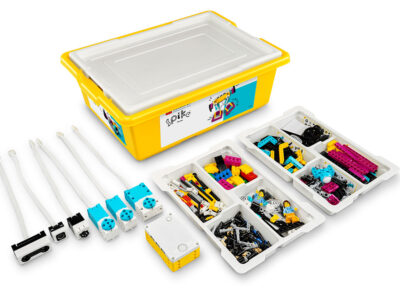Sequence is a memory game that shows a sequence of Emojis on Coji’s face that kids must repeat on their tablet. This game is actually pretty hard! You’re having to look at Coji and then tap the symbols.
Sequencing commands together is an important coding skill. It’s not clear to me that this activity builds that skill (though other Coji activities certainly do) but memory skills are very useful to develop
Macro Maze
Macro Maze is a guided activity where kids have to use motion commands and Emojis to guide an onscreen Coji through a maze.
It’s important to understand that the Coji robot doesn’t follow these instructions, instead it acts as a companion and rewards kids when they complete a level.
The format will be familiar to kids who have used Code.org and other coding apps where kids must write code to get a character through a maze. You can complete levels a little bit at a time which makes the activities manageable. Kids who are ready for the challenge can write the code for a whole maze in one go, but others can break it down into smaller parts and solve them one at a time.
The twist here is that the levels are timed. This does add some extra difficulty as kids who are just using trial and error will run out of time.
There’s also some problem solving built in, you have to use the right Emoji to remove obstacles that are included in the mazes.
My 9 year old was able to easily complete the activities but he did have to stop and think about the obstacles and had to up his game to complete some of the harder levels within the time limit. I can see that children with less experience would have to work quite hard to get through some of the levels.
It would be good to have the option for Coji to actually follow the instructions as well as the onscreen robot. At the moment the Coji doesn’t have much to do during this activity. You can’t use this activity without Coji turned on though – it just goes back to the start screen if you turn him off.
Freeplay
I think Freeplay is where kids will spend most of their time with Coji in the long term and where most of the learning will happen. In this mode you can code a series of Emojis and then send your program to Coji.
Each Emoji triggers a behaviour which can include movement, sound effects and an animation on Coji’s LED screen face. For example the flower Emoji makes Coji move forward, sniff a flower which appears on the screen and then sneeze and move back.
Coji responds as if you’re having an instant messaging chat. This may be familiar to some kids who use kids messaging apps, but for others this will be an introduction to instant messaging and the use of Emojis. This is fun, but it would be nice to have an option to turn it off so that a child can just concentrate on what they are coding or take turns with a real coding partner. When we’ve had two kids playing with Coji they naturally want to take turns controlling Coji and sending it back and forwards between them with a message.
You can set up a challenge for kids to code their way through using real world obstacles. There’s also plenty of scope for story-telling through using Cojis Emojis. And you can set Coji up to go over to someone and send them an Emoji message (friendly or otherwise!)
Coji encourages kids to get up and move around because you can only see the Emojis when Coji is facing you. The robot doesn’t work so well if kids just stay sitting in one place.
Additional Emojis are locked at the start, but we haven’t managed to unlock them yet despite my son completing all of the Macro Maze levels.
At the moment the app seems to ignore repeats of the forward and backward commands, only moving forward or backwards once. This is confusing as this is a very common pattern in the Macro Maze activity. You can get around it by placing other Emojis in between the forward and backward ones, or using other Emojis such as thumbs up and down which also move.
Command Centre
The Command Centre allows kids to create ‘macros’ that capture a sequence of commands that can be used to create a sequence of commands that can be reused.
Each macro is assigned a number and you can use macros that you have defined in freeplay mode. It would be nice if macros could be assigned an image instead of a number as that would be more memorable and more in keeping with the Coji concept, this could easily be added in future though.
The macros can be downloaded to Coji so that they can be used when Coji isn’t connected to the app.
Here’s a demo of triggered a macro when Coji is disconnected from the app:
Triggering actions based on events is also indicated in the promotional information about Coji so you should be able to say if the head is pressed then trigger some code, but we haven’t found this in the app yet. It may also be possible to trigger behaviour based on Coji’s motion sensors in future – Coji can detect when it is picked up, tilted or shaken.
It would also be good to be able to control the colour of the LED on Coji’s front – at the moment the colour is changed by some of the Emoji’s but there’s not a way to control in specifically. Custom Emojis would be fun too. Maybe we’ll see more features in future.
Coji’s cool design and use of Emojis means that the robot will appeal to a wide age range. The variety of modes means that Coji has longevity, sometimes kids will feel like using it as a remote control toy and other times they’ll be up for solving a real world challenge through coding.
The feature to download ‘macros’ to Coji for disconnected play is fantastic. This will make kids feel like real programmers who can make a tech toy do just what they want.
The recommended age range is 4-7, this may be because WowWee has another programmable robot targetting the 8+ age range (the Coder MiP) but I think 8-10 year olds would also enjoy Coji and have lots of fun with it.











